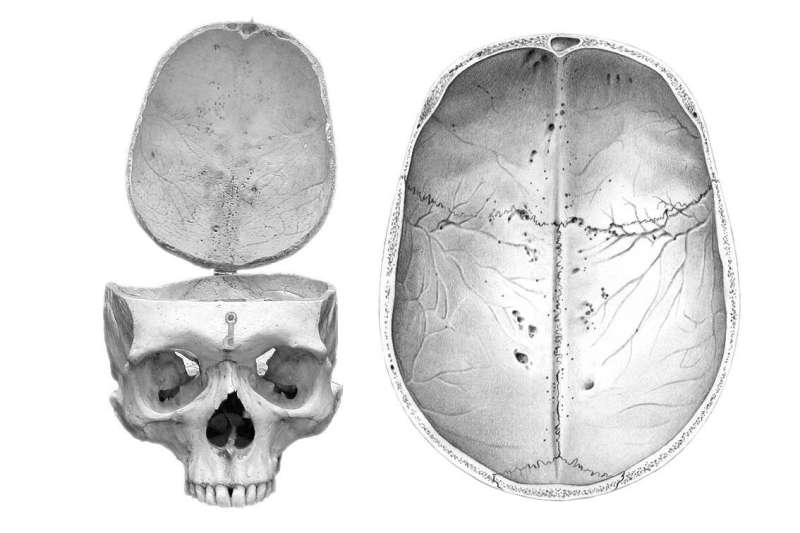Studying the human brain through craniovascular traits

Arteries and veins leave their marks on the bones of the cranium, and these traces can be used in anthropology, bioarchaeology and paleontology to investigate the blood system in extinct species or past populations. This week, the Journal of Anatomy is publishing an article by lead author Emiliano Bruner, paleoneurologist at the Centro Nacional de Investigación sobre la Evolución Humana (CENIEH), on the distribution of these craniovascular traits in modern humans.
The results suggest in general that the size and shape of the cranium do not influence the distribution of these vessels, with certain exceptions, such as the mastoid channels in the rear part of the cranium, which represent a major additional route for blood flow in the largest or widest craniums.
In addition to the size and shape of the cranium, sexual differences and asymmetries were also analyzed. "Men more often present additional channels for venous drainage at the level of the nape of the neck, and beyond the interest these traits hold for anthropology and archaeology, they are also of clinical importance for many kinds of vascular pathologies, as well as in surgery and forensic anthropology," explains Bruner.
Evolutionary changes and kinship
These marks of veins and arteries can offer information about evolutionary changes between species or on degrees of kinship between individuals. To do so, it is necessary to study the same traits in modern individuals, as they can furnish numerous samples and more information when it comes to investigating the factors involved in these characters.
The sample used in this study includes two populations: one Italian and one Czech. The two have the same cranial size but different vault proportions, and they offer a range of variation enabling how these vascular traits change with cranium shape to be verified.
"The vascular system is crucial for the oxygenation of the brain, but also for its thermal regulation and even for its mechanical support. Despite this, information about its blood system continues to be scant," Bruner says.
More information: Stanislava Eisová et al. Normal craniovascular variation in two modern European adult populations, Journal of Anatomy (2019). DOI: 10.1111/joa.13019
Provided by CENIEH





















